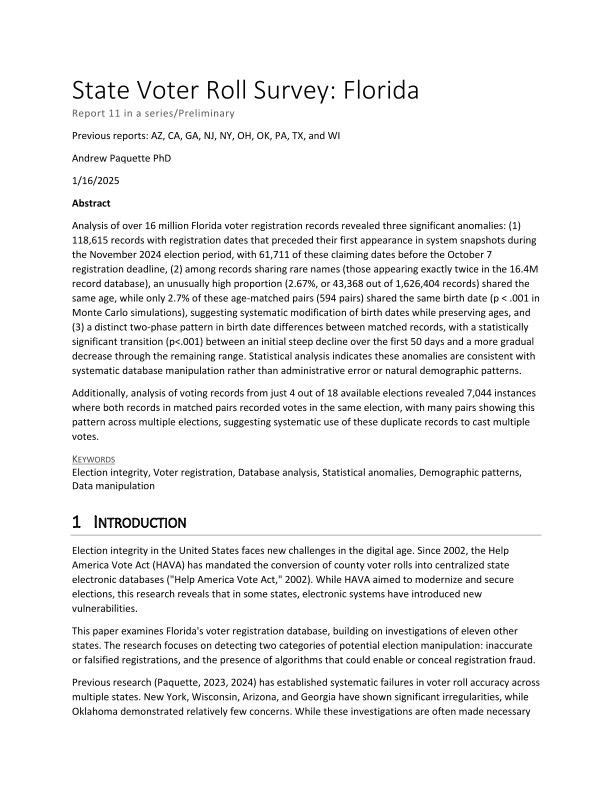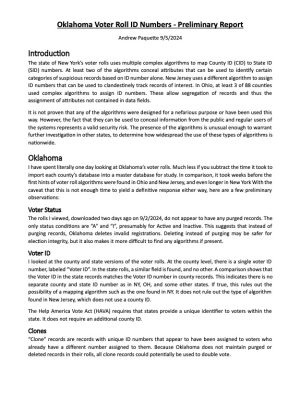Author: Andrew Paquette, PhD
Analysis of over 16 million Florida voter registration records revealed three significant anomalies: (1) 118,615 records with registration dates that preceded their first appearance in system snapshots during the November 2024 election period, with 61,711 of these claiming dates before the October 7 registration deadline, (2) among records sharing rare names (those appearing exactly twice in the 16.4M record database), an unusually high proportion (2.67%, or 43,368 out of 1,626,404 records) shared the same age, while only 2.7% of these age-matched pairs (594 pairs) shared the same birth date (p < .001 in Monte Carlo simulations), suggesting systematic modification of birth dates while preserving ages, and (3) a distinct two-phase pattern in birth date differences between matched records, with a statistically significant transition (p<.001) between an initial steep decline over the first 50 days and a more gradual decrease through the remaining range. Statistical analysis indicates these anomalies are consistent with systematic database manipulation rather than administrative error or natural demographic patterns.
Additionally, analysis of voting records from just 4 out of 18 available elections revealed 7,044 instances where both records in matched pairs recorded votes in the same election, with many pairs showing this pattern across multiple elections, suggesting systematic use of these duplicate records to cast multiple votes.




